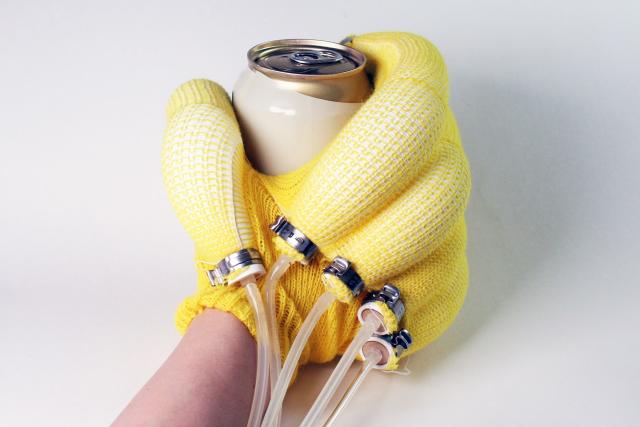Overview
The review by Rus and Tolley outlines the evolution of soft robotics—a field inspired by biological systems that use compliant, deformable materials to create machines capable of complex, adaptive behaviors. Unlike traditional rigid robots, soft robots leverage materials with moduli similar to biological tissues (on the order of 10⁴–10⁹ Pa), allowing them to bend, twist, and adapt safely during human interaction and in uncertain environments.
What Is Soft?
“Soft” refers primarily to the body’s material properties rather than the robot’s overall structure. The article defines soft robots as systems whose structural materials exhibit compliance akin to muscles, skin, or cartilage. This inherent softness not only increases safety but also enables more natural interactions with objects and environments. The review contrasts conventional rigid materials (metals, hard plastics) with softer, biologically inspired materials.
Design and Fabrication
The authors discuss that soft robot design begins with choosing compliant materials and designing a continuous, deformable structure. The fabrication techniques are diverse and include soft lithography, multimaterial 3D printing, and shape deposition manufacturing (SDM). Many soft robot designs use modular, layered bodies where embedded electronics, fluidic channels, and other subsystems (actuators, sensors) coexist.
Actuation Methods
Two principal actuation strategies are highlighted:
- Tendon-based Actuation: Variable length tendons or shape memory alloy actuators are embedded to create bending motions, inspired by biological muscle contractions.
- Fluidic Actuation: Pneumatic or hydraulic systems inflate channels within soft materials. Designs like pneumatic artificial muscles (McKibben actuators) and fluidic elastomer actuators (FEAs) use pressurized fluids to generate movement. The review also briefly mentions emerging electrically activated actuators based on electroactive polymers (EAPs) and approaches to control material stiffness dynamically via embedded heaters or jamming mechanisms.
Embedded Electronics and Sensing
Integration is key. The article emphasizes the challenge of embedding sensors, actuators, and computation within a soft matrix. Traditional rigid electronics are gradually being replaced or complemented by soft, stretchable circuits, which allow for continuous deformation without compromising function. For sensing, soft robots often rely on non-traditional sensors like curvature sensors, often created using microfluidic channels filled with liquid metal. Such sensors provide proprioceptive feedback necessary for adaptive control.
Computation and Control
Soft robotics introduces new challenges in modeling and control due to the continuous, high-degree-of-freedom deformations. Traditional rigid-body kinematics and dynamics are insufficient. Researchers have developed continuum models—often based on the piecewise constant curvature (PCC) assumption—to map actuation to the resulting deformations. Both forward and inverse kinematics become significantly more complex.
Low-level control is typically implemented through pressure or volume regulation of actuators, while higher-level planning algorithms account for the entire robot body’s configuration to perform tasks such as manipulation or obstacle avoidance. The review covers methods for both open-loop and closed-loop control, including examples where visual servoing and iterative learning control have been successfully applied.
Systems and Applications
The article details a wide range of soft robotic systems demonstrating capabilities in:
- Locomotion: Systems inspired by caterpillars, worms, and fish show that soft robots can crawl, roll, and swim.
- Manipulation: Soft grippers can adapt to various objects using compliance to conform to irregular shapes, simplifying tasks that are challenging for rigid systems.
- Medical and Wearable Applications: Owing to their inherent safety, soft robots have promising applications in human-machine interfaces, such as wearable rehabilitation devices and minimally invasive surgical tools.
- Soft Cyborgs: Integrating biological materials with engineered systems is another emerging frontier, with examples including muscle-powered constructs and biodegradable actuators.
Future Directions
Looking ahead, the authors identify several areas for further development:
- Rapid Design and Fabrication Tools: There is a need for accessible design automation and fabrication recipes to allow non-experts to create soft robots.
- Improved Control Algorithms: Enhanced models that better capture soft dynamics will lead to more capable and responsive control systems.
- Integrated Soft Electronics: Progress in stretchable electronics will further blur the boundary between the robot’s body and brain, enabling more autonomous and robust systems.
- Task-Specific Softness: The optimal degree of softness depends on the application; for instance, extreme compliance may be required for minimally invasive procedures, whereas some tasks might benefit from a hybrid rigid-soft design.
- Morphological Computation: Embracing the concept that the robot’s body itself can perform computation through its material properties may revolutionize control paradigms.




